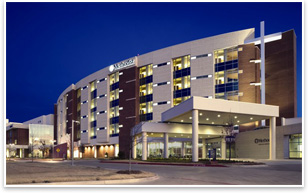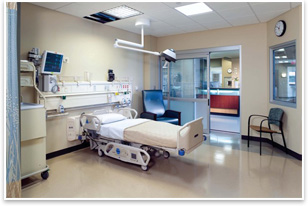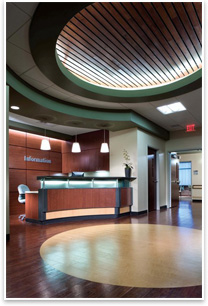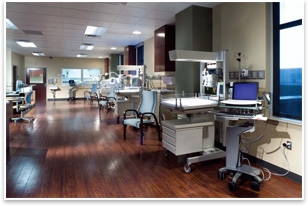
| Suburban DFW Hospital Goes All-Digital
RTKL specified digital technical equipment for all the modalities, including ultrasound, nuclear medicine, CT scans, and MRIs. They’ve also implemented digital mammography. No longer will a woman have to wait anxiously for her films to be developed. “The patient can leave immediately from the exam room back to life and forget about the experience,” Annis says. Permanent record
RTKL installed a camera on the surgical light that can transmit the signal and images through streaming video to the referring physician or to any other provider for an immediate consultation and two-way communication. For laparoscopic surgery, outside physicians have a view through the endoscope. That information is also captured for the record. Patient-centric amenities The wireless system the staff uses to update the computers is also available to patients and visitors. Flat-panel TVs offer a modern way to deliver entertainment and patient education. Resort-style bedding, guest sofa beds for family overnight accommodations, and on-demand dining all contribute to the patient experience. If the patients need to be monitored but are not very sick, Annis says, their signal follows them throughout the hospital. A patient on a cardiac watch, for example, could take a walk to the solarium, visiting spaces, or cafeteria. If a patient is taken to the imaging department, the signal is still being picked up and there is a constant feed.
Annis notes that the technology is changing so fast that by the time they completed the project, they probably altered the specifications two or three times over two years. The digital technology, Annis says, is a “significant cost increase, but it’s a really significant improvement on the process in the hospital.” “I see the best improvement, of course, to the patient,” Annis says. “That’s most important to me. I always like to say that when I build a hospital, I want to be proud of it and I want most patients to walk out of it when they’re done.” |
||
Copyright 2007 The American Institute of Architects. All rights reserved. Home Page |
||
news headlines
practice
business
design
recent related
› Consumer-focused Hospital Planned for Cincinnati Suburb
› Bow-Tie Plan Shapes Patient-centric Hospital
Photos © Charles Davis Smith.
The hospital’s opening marks the completion of phase one for the center, the architects report. Methodist Health System has also planned for a second phase for the hospital, which will add a 144-bed patient tower, and additional medical office building, and parking structure.
The RTKL Design team includes:
• Brad T. Barker, AIA, principal-in-charge
• Steven Biller, AIA, lead designer
• Keith Guidry, AIA, project director
• Richard Miller, AIA, project architect
• Amy E. Thomasson, IIDA, interior designer
• Jeff Hall, construction manager.
RTKL Healthcare Technologies (formerly EQ International) provided medical equipment planning and procurement assistance with team members Harold Annis, medical equipment planner, and Gary Buss, systems designer.




